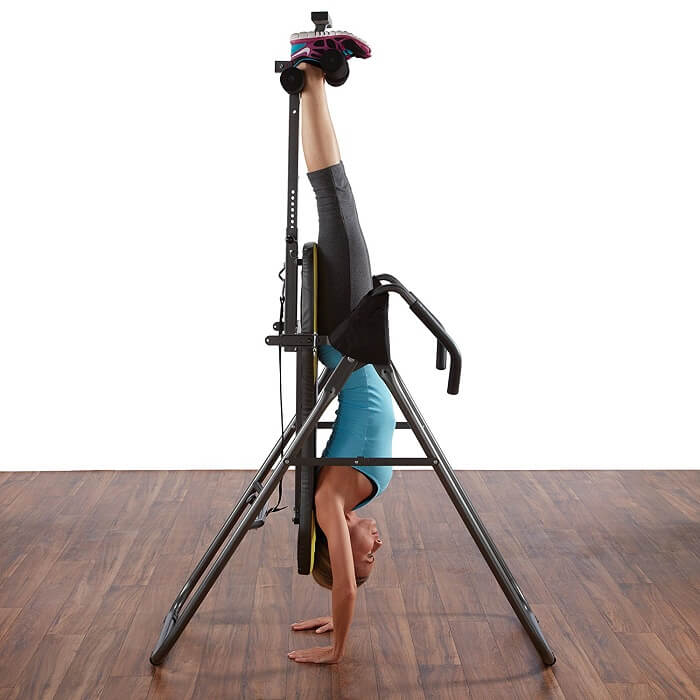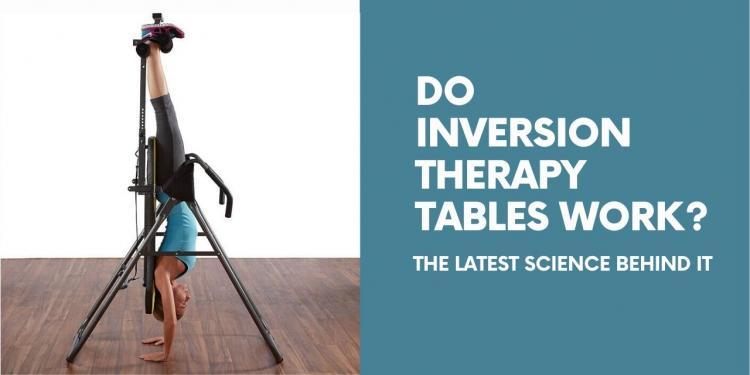Back pain is a pretty common ailment, especially with martial artists and people who participate in high impact sports.
One of the ways that scientists and the fitness community propose to solve this common problem is with inversion therapy.
Inversion tables have been on the market for a while and remain the darlings of TV infomercials.
And you’re not imagining things if you notice that innovative health and wellness products entering the consumer marketplace go from popular concept to scrutinized idea. Inversion tables are no different.
In this article, we explore the theory behind inversion therapy. We seek to answer the question of whether inversion therapy is an effective treatment for back pain.


The History and Purpose Behind Inversion therapy
There is a myriad of contemporary theories about why inversion therapy tables work or don't work. Researchers believe the concept behind decompressing the back to find pain relief goes back to Hippocrates, father of medicine. He invented the Hippocratic Bench, the first version of the inversion table, around 400 BC.
Hippocrates used this structure to do everything pertaining to the skeletal system. This included stretching the skeletal system. Like today’s inversion tables, patients reclined on this contraption.
The Greek physician used ropes to constraint body parts in need of rehabilitation, depending on the diagnosis. This was to hold them in place as pullies did the work of tightening or loosening pressure. The contraption looks a lot like a torture device.
Was Hippocrates an innovator? Definitely, though, his invention was both rudimentary and not very comfortable for bench occupants. Further, these rigs didn't uniformly apply to the areas in need of relief. Hippocrates improved on the device and further developed his idea into a fully-functioning adjustment table that required ladders and pulleys to allow gravitational forces to remedy joint and spine issues.
You can see an illustration of the device invented by Hippocrates below:

Nobody is sure why this concept wasn’t resurrected until the 1960s when holistic practitioners sought ways to deal with their patients' pain that didn’t involve drugs or surgery.
Dr. Robert Martin, a California chiropractor, adapted Hippocrates' concept to create the modern-day inversion table, and by 1980, inversion therapy had been adopted by alternative medicine professionals. Today’s inversion tables carry on that tradition.
The Science Behind Inversion Therapy
Given roots as deep as those reaching back to Hippocrates, it seems reasonable that scientists and medical professionals would want to know exactly how inversion tables, weight boots, and other devices that rely upon gravity work their magic.
During inversion therapy, patients are literally turned upside-down for seconds to minutes at a time during treatments to take the pressure off the spine, bones and even nerve roots.
As gravity works its magic on the body, the spine "decompresses" and the spinal column relaxes. Therefore, reducing the pressure on the discs by stretching each vertebra is a way to alleviate pain.
The inversion table is a rudimentary form of spinal traction. Likewise, increasing the distance between discs does not create long-lasting relief.
Empirically, people do at least get temporary relief after spending a bit of time on an inversion table. Joe Rogan, the famous UFC commentator, podcast host, and comedian, speaks very highly of inversion therapy. On his podcast with Jesse Ventura, he said:
“I've suffered from several back injuries over the years (bulging discs) from jiujitsu and working out. One of the things that has helped me a lot is using one of those Teeter Inversion Tables. I strap my ankles into this thing, and I hang upside down - it's a great way to decompress your back and get rid of pain.”
So there is empirical evidence of it working, but what is the science behind it? Does it support its use? Although there isn't many studies of its efficacy, we were able to dig up some.
A Sampling of Scientific Studies
First Study
Study #1: “Inversion therapy in patients with pure single-level lumbar discogenic disease: a pilot randomized trial”.
Six researchers who participated in this study focused on backache and sciatica triggered by protuberant disc disease. The authors cite surgery as the usual treatment.
The researchers treated 26 participants with either "physiotherapy or physiotherapy and intermittent traction with an inversion device". They designed this to measure the effectiveness of inversion tables vs. surgery.
76.9 percent of participants in the inversion group avoided surgery after six weeks. Doctors concluded that the inversion table significantly reduced the need for surgery based on study findings.
Second Study
Study #2: Extension traction treatment for patients with discogenic lumbosacral radiculopathy: a randomized controlled trial.
A total of 64 patients took part in this randomized, controlled study that required a 6-month follow-up designed to determine the “effects of lumbar extension traction in patients with unilateral lumbosacral radiculopathy due to L5-S1 disc herniation.”
The researchers gave a 32-person control group hot packs and inferential therapy. They then gave the second 32-person group hot packs, inferential therapy, and inversion therapy. After 10 weeks, investigators measured vertebral movements to determine progress and found “a significant difference”.
Those receiving anti-gravity treatment ended the study with less back and leg pain and increased mobility in affected areas. After six months, statistically-significant improvements remained in place while subjects receiving only hot packs and interferential therapy reverted to their previous aches and pains.
Third study
Study #3: Lumbar extension traction alleviates symptoms and facilitates healing of disc herniation.
While this study only takes into account the treatment of a single 56-year-old man suffering from chronic low back pain resulting from sciatica due to lumbar disc herniation, it is nevertheless significant.
Despite being previously treated by three chiropractors before becoming the subject of this clinical study, the patient began recovering during the 26 weeks of lumbar extension traction (inversion therapy). There was no relapse reported eight years after these treatments took care of his pain and discomfort.
Range of motion improvements in the lumbar region alone are considered by scientists involved in this study to be proof that by employing gravity-relieving inversion techniques, this patient “achieved a significant healing of herniation and reduction in symptoms not obtained following traditional chiropractic procedures alone.” Enter your text here...
Is Inversion Therapy Right For You?
Like most treatments undertaken in pursuit of pain-free living that also allows one to enjoy full mobility and range of motion, that question depends upon whom you ask. The three clinical studies cited above all have positive outcomes as patients were treated with inversion therapy as all or part of their treatment plans.
Empirically, many people from a wide range of fields whose pain couldn’t be quelled by doctors or medicines found in inversion tables the perfect alternative—one that Dr. Edward R. Laskowski profiles in his Mayo Clinic blog post.
His conclusions? While inversion therapy may not be for everyone—particularly those suffering from conditions that can be exacerbated by hanging upside-down—Dr. Laskowski says that, in his opinion, while spinal traction isn’t likely to be effective for long-term relief, “people find traction temporarily helpful as part of a more comprehensive treatment program for lower back pain caused by spinal disk compression.”
Mainstream medicine has not yet accepted inversion therapy. Doctors need more studies and research. It is not a long-term solution to back pain. However, results look promising, especially for short-term relief.
Inversion therapy is not right for some people, though.
Doctors recommend avoiding anti-gravity equipment if you have high blood pressure, and heart and eye conditions. One can risk headaches, blurred vision, blood pressure spikes, and retina bleeding. Pregnant women should also refrain from using inversion tables.
Check out our review of the best inversion tables! Also, Sports Fitness Advisor also has a great article on gravity boots.




